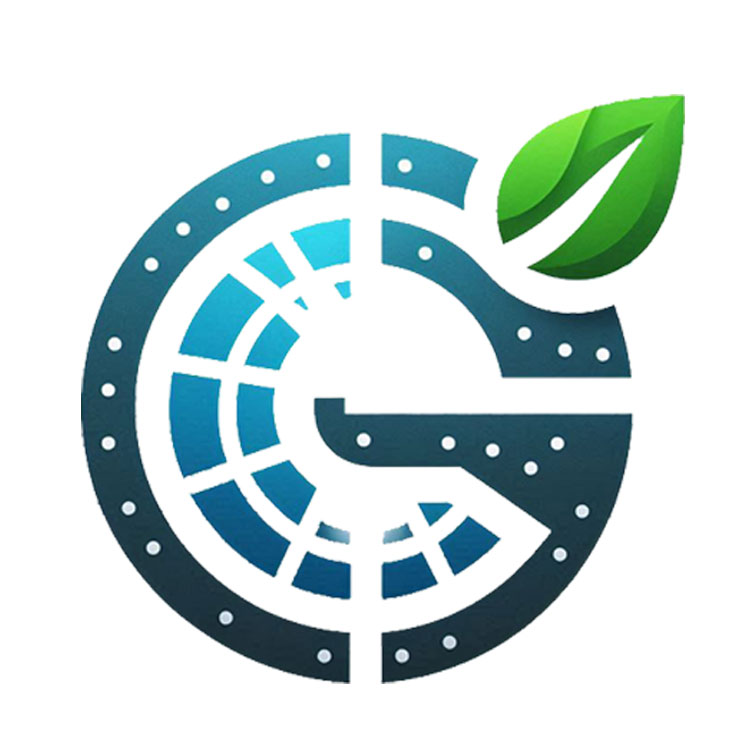
Environmental Monitoring Analysis
Environmental Monitoring Analysis cleantech encompasses a range of tools, methods, and innovations designed to track, analyze, and mitigate environmental impacts.
- Here are several categories and subcategories of Environmental Monitoring Analysis within the cleantech that you can use as a Features when you are Add Listing in Global Cleantech Directory Platform. Environmental Monitoring Analysis subcategories illustrate the broad spectrum of technologies and methods used to monitor, analyze, and improve environmental quality, contributing to the overall goal of sustainable development and environmental protection through cleantech innovations when people are searching in the Global Cleantech Directory Platform.
1. Air Quality Monitoring:
- – Ambient Air Monitors: Devices that measure pollutants in the outdoor air.
– Indoor Air Quality Sensors: Devices used to monitor indoor pollutants such as volatile organic compounds (VOCs) and particulate matter (PM).
– Emissions Monitoring Systems: Technologies used to measure pollutants released from industrial sources and vehicles.
2. Water Quality Monitoring:
- – Surface and Groundwater Monitoring: Equipment and techniques for assessing the quality of rivers, lakes, and groundwater.
– Wastewater Monitoring: Systems used to analyze the composition of wastewater before and after treatment.
– Real-Time Water Sensors: Devices providing continuous data on parameters like pH, turbidity, dissolved oxygen, and contaminants.
3. Soil and Land Monitoring:
- – Soil Health Sensors: Tools for measuring soil moisture, nutrient levels, and organic matter content.
– Erosion Monitoring: Technologies to track soil erosion rates and sediment transport.
– Contaminant Detection: Systems for identifying pollutants in soil, such as heavy metals and pesticides.
4. Biodiversity and Ecosystem Monitoring:
- – Wildlife Tracking Devices: GPS collars and tags used for tracking animal movements and behaviors.
– Habitat Assessment Tools: Methods and technologies for evaluating the health and diversity of habitats.
– Remote Sensing for Ecosystems: Use of satellites and drones to monitor land cover changes, vegetation health, and ecosystem dynamics.
5. Climate and Weather Monitoring:
- – Weather Stations: Equipment that measures local weather conditions including temperature, humidity, wind speed, and precipitation.
– Climate Data Analysis Tools: Software and models used to analyze climate patterns and predict future changes.
– Greenhouse Gas Monitoring: Technologies for measuring concentrations of CO2, methane, and other greenhouse gases.
6. Noise and Vibration Monitoring:
- – Noise Level Meters: Instruments that measure sound levels in various environments.
- – Vibration Sensors: Devices used to detect and analyze vibrations from industrial activities, traffic, and construction.
7. Remote Sensing Technologies:
- – Satellite Imagery: Use of satellites to gather data on land use, vegetation cover, and environmental changes.
– Drone-Based Monitoring: UAVs equipped with cameras and sensors for high-resolution environmental monitoring.
8. Chemical and Biological Monitoring:
- – Chemical Sensors: Devices that detect specific chemicals in air, water, or soil.
– Bioindicators: Use of living organisms to assess environmental health and contamination levels.
– Microbial Monitoring: Techniques for detecting and analyzing microbial populations and activities.
9. Environmental Data Management and Analysis:
- – Data Collection Platforms: Systems for aggregating environmental data from various sources.
– GIS and Mapping Tools: Geographic Information Systems used to visualize and analyze spatial environmental data.
– Predictive Modeling: Software that uses historical data to forecast environmental trends and impacts.
10. Energy and Resource Consumption Monitoring:
- – Smart Meters: Devices that measure electricity, gas, and water usage in real time.
– Energy Auditing Tools: Technologies for assessing the energy efficiency of buildings and industrial processes.
– Resource Tracking Systems: Methods for monitoring the use of natural resources such as water, minerals, and forests.
11. Pollution Control Technologies:
- – Air Scrubbers and Filters: Systems for removing pollutants from air emissions.
– Water Treatment Systems: Technologies for purifying drinking water and treating wastewater.
– Soil Remediation Techniques: Methods for cleaning up contaminated soils, such as bioremediation and phytoremediation.
12. Environmental Compliance and Reporting Tools:
- – Regulatory Compliance Software: Tools for ensuring adherence to environmental regulations and standards.
– Environmental Impact Assessment (EIA) Tools: Methods for evaluating the potential environmental impacts of proposed projects.
– Sustainability Reporting Platforms: Systems for documenting and communicating environmental performance and sustainability efforts.

Empowering a Sustainable Future
Innovate, Connect, Transform
Recommended Tags
Environmental Monitoring Analysis
- Here are some commonly used tags in the Environmental Monitoring Analysis within the cleantech that you can use when you are Add Listing in the Global Cleantech Directory Platform. Environmental Monitoring Analysis tags cover a wide range of topics related to tracking, assessing, and managing environmental data that help categorize various aspects of Environmental Monitoring Analysis, facilitating the search for specific information, technologies, and methodologies related to tracking and managing environmental data when people are searching in the Global Cleantech Directory Platform.
Air Quality Monitoring
- Ozone Monitoring
VOCD etection
Emissions Monitoring
Indoor Air Quality
- Air Pollution
PM2.5
PM10
Biodiversity Monitoring
- Ecological Surveys
Remote Sensing
Bioindicators
Conservation Biology
- Wildlife Tracking
Habitat Monitoring
Species Inventory
Water Quality Monitoring
- Heavy Metals Detection
Nitrate/Nitrite Monitoring
Microbial Contamination
Aquatic Ecosystems
- Water Pollution
pH Monitoring
Turbiditya
Soil Quality Monitoring
- Nutrient Analysis
Heavy MetalsinSoil
Soil Erosion
Soil Health
- Soil Contamination
Soil pH
Soil Moisture
Climate Monitoring
- Temperature Monitoring
Precipitation Monitoring
Climate Data
Weather Stations
- Climate Change
Greenhouse Gas Emissions
Carbon Footprint
Noise and Vibration Monitoring
- Vibration Analysis
Urban Noise
Industrial Noise
Environmental Acoustics
- Noise Pollution
Sound Level Meters
Acoustic Monitoring
Remote Sensing and GIS
- Satellite Imagery
Aerial Surveys
Geographic Information Systems(GIS)
GIS
- Land Use Mapping
Remote Sensing Data
Drone Mapping
Spatial Analysis
Environmental Data Management
- Datan Logging
Real-Time Monitoring
Environmental Databases
Data Analytics
Environmental Modelling
- Big Data Environmental Science
Big Data
Environmental Science
Data Visualization
Regulatory Compliance
- Environmental Regulations
Compliance Monitoring
EPA Standards
Reporting Requirements
- Environmental Audits
Permitting
Environmental Policy
Pollution Control
- Air Scrubbers
Water Treatment Plants
Bioremediation
Environmental Engineering
- Contaminant Removal
Filtration Systems
Waste Treatment
Sustainable Practices
- Green Technology
Environmental Impact Assessment(EIA)
EIA
Life Cycle Assessment(LCA)
LCA
- Sustainability Metrics
Eco-Efficiency
Resource Conservation
Circular Economy
Citizen Science
- Community Monitoring
Public Engagement
Crowd sourced Data
Environmental Education
- Volunteer Monitoring
Grassroots Initiatives
Participatory Science
Health and Safety
- Occupational Exposure
Risk Assessment
Environmental Health
Toxicology
- Public Health
Safety Standards
Health Impact Assessment
Energy and Resource Monitoring
- Energy Consumption
Renewable Energy Monitoring
Water Use Monitoring
Resource Efficiency
- Energy Audits
Sustainable Resource Management
Energy Analytics
Technology and Innovation
- Environmental Sensors
IoT Environmental Monitoring
Automated Monitoring Systems
Smart Cities
- Environmental Robotics
Innovative Monitoring Techniques
Sensor Networks
Popular Q&A
Environmental Monitoring Analysis
- Here are some popular questions and answers (Q&A) related to Environmental Monitoring Analysis within the context of cleantech:
Ocean sustainable development involves managing ocean and coastal resources in ways that meet present needs without compromising the ability of future generations to meet their own needs. It includes practices that protect marine ecosystems, promote sustainable economic activities, and ensure social equity.
Sustainable development is crucial for oceans to preserve marine biodiversity, support livelihoods, mitigate climate change impacts, and maintain the health and productivity of marine ecosystems, which are vital for global food security and economic stability.
Protecting marine biodiversity can be achieved through the establishment of marine protected areas (MPAs), enforcing sustainable fishing practices, reducing pollution, restoring degraded habitats, and conducting research and monitoring to inform conservation efforts.
MPAs are designated regions of the ocean where human activities are managed and regulated to protect important ecosystems and biodiversity. They help conserve critical habitats, protect endangered species, and maintain ecological balance.
Main sources of marine pollution include plastic waste, oil spills, agricultural runoff (containing pesticides and fertilizers), sewage discharge, and industrial effluents. These pollutants harm marine life and ecosystems.
Reducing plastic pollution can be achieved by minimizing single-use plastics, improving waste management systems, promoting recycling, supporting clean-up initiatives, and raising public awareness about the impact of plastic pollution on marine environments.
Climate change affects oceans by causing sea level rise, increasing ocean temperatures, altering ocean currents, and contributing to ocean acidification. These changes impact marine life, coastal communities, and global weather patterns.
Ocean acidification is the process by which oceans absorb excess carbon dioxide from the atmosphere, leading to lower pH levels. It is a concern because it negatively affects marine organisms, particularly those with calcium carbonate shells or skeletons, such as corals and shellfish.
Sustainable fishing practices include setting catch limits based on scientific assessments, using selective fishing gear to reduce bycatch, protecting breeding and nursery areas, and implementing policies that prevent overfishing and ensure fish populations remain healthy.
Sustainable aquaculture can be achieved by using environmentally friendly feed, reducing the use of antibiotics and chemicals, implementing waste management practices, protecting natural habitats, and adopting integrated multi-trophic aquaculture (IMTA) systems.
NGOs play a crucial role in ocean conservation by advocating for policy changes, raising public awareness, conducting scientific research, and implementing on-the-ground conservation projects. They often work with communities, governments, and other stakeholders to protect marine environments.
Renewable energy sources from oceans include offshore wind energy, wave energy, tidal energy, and ocean thermal energy conversion (OTEC). These technologies harness natural oceanic processes to generate clean energy.
Offshore wind energy benefits include the generation of substantial amounts of clean electricity, reduced greenhouse gas emissions, and the potential for job creation in the renewable energy sector. Offshore wind farms also have less visual and noise impact compared to onshore wind farms.
Ocean research is important because it provides critical data and insights into marine ecosystems, biodiversity, and environmental changes. This information guides sustainable management practices, policy-making, and conservation efforts.
Innovative technologies in ocean research include autonomous underwater vehicles (AUVs), remote sensing satellites, underwater drones, ocean sensors and buoys, and advanced data analytics. These technologies enhance our understanding of the ocean and improve monitoring and conservation efforts.
The blue economy refers to the sustainable use of ocean resources for economic growth, improved livelihoods, and jobs while preserving the health of marine and coastal ecosystems. It includes sectors such as fisheries, tourism, renewable energy, and maritime transport.
Coastal communities can benefit from sustainable ocean practices through enhanced food security, job creation in eco-friendly industries, improved resilience to climate change, and the preservation of cultural heritage and natural resources.
Key international agreements supporting ocean sustainability include the United Nations Convention on the Law of the Sea (UNCLOS), the Convention on Biological Diversity (CBD), and the Paris Agreement on climate change. These agreements promote the sustainable management and protection of marine resources.
Marine spatial planning (MSP) is a process that guides where and when human activities occur in the ocean. It aims to balance ecological, economic, and social objectives by allocating space for different uses while protecting marine environments.
Public-private partnerships contribute by combining resources, expertise, and networks from government, private sector, and non-profit organizations to address complex ocean sustainability challenges. These collaborations can lead to innovative solutions, funding opportunities, and scalable conservation efforts.
- These Q&A topics cover a broad range of common questions and provide a solid foundation for understanding the key aspects of environmental monitoring analysis.
- Explore the link to learn about Environmental Monitoring Analysis category and discover related insights from our Annual EarthDay Conference Speech

